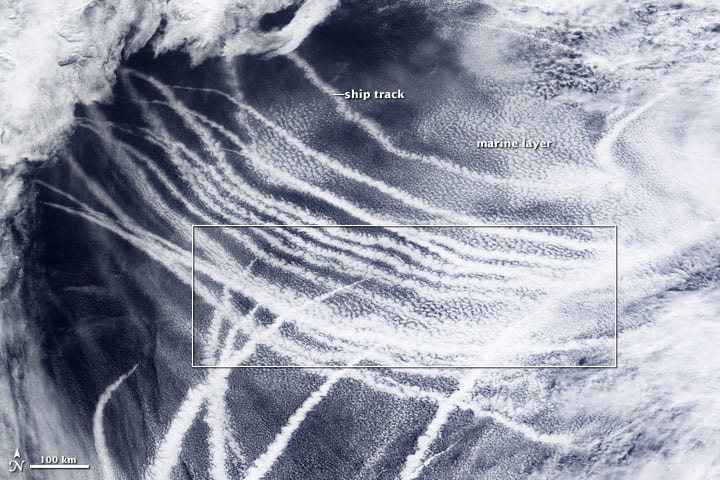Shipping in ice-free Arctic Ocean could have cooling effect on climate, simulations show

Sea ice is melting due to global warming, enabling greater maritime access to the Arctic Ocean. Emissions from transoceanic cargo ships taking advantage of this could either warm the climate further by darkening snow and ice surfaces or cool it by enhancing cloud reflectance. In a study published recently in the American Geophysical Union journal Geophysical Research Letters, researchers from UCI, the University of Connecticut and the Pacific Northwest National Laboratory describe using a fully coupled global climate model to simulate – for the first time – the effects of emissions from trans-Arctic shipping. Results showed that these emissions will increase regional cloudiness in the summer and offset Arctic warming by about 1 degree by 2100. Thicker summertime clouds reflect more solar radiation back into space, reducing energy absorbed by the planet’s surface and cooling ocean temperatures later in the fall. In turn, ice formation is boosted in the following winter, which compounds the cloud-induced cooling. “It was surprising to see that Arctic clouds can respond to shipping emissions by reorganizing into a configuration that cools the surface despite the soot pollution,” said co-author Charlie Zender, UCI professor of Earth system science. “We thought when we began that the soot might dominate the climate response and lead to the opposite result. Still, this cooling offsets only about 10 percent of the greenhouse gas warming in our simulations, so it’s scant relief from the larger forces reshaping the formerly pristine Arctic.” Co-author Wenshan Wang, a UCI postdoctoral scholar in Earth system science, stressed that the findings should not be taken as an endorsement of Arctic shipping as a solution to climate change. “More shipping not only increases the risk of oil spills in ice-covered waters, but also enables extraction of new Arctic fossil fuel resources, accelerating global warming and delaying the transition toward a renewable energy system,” she said. “Our study highlights the complexity of the climate response to increased Arctic shipping and the need for integrated analysis of climatic and transport systems to further clarify the reciprocal relationship of climate and human activities in the Arctic.”


